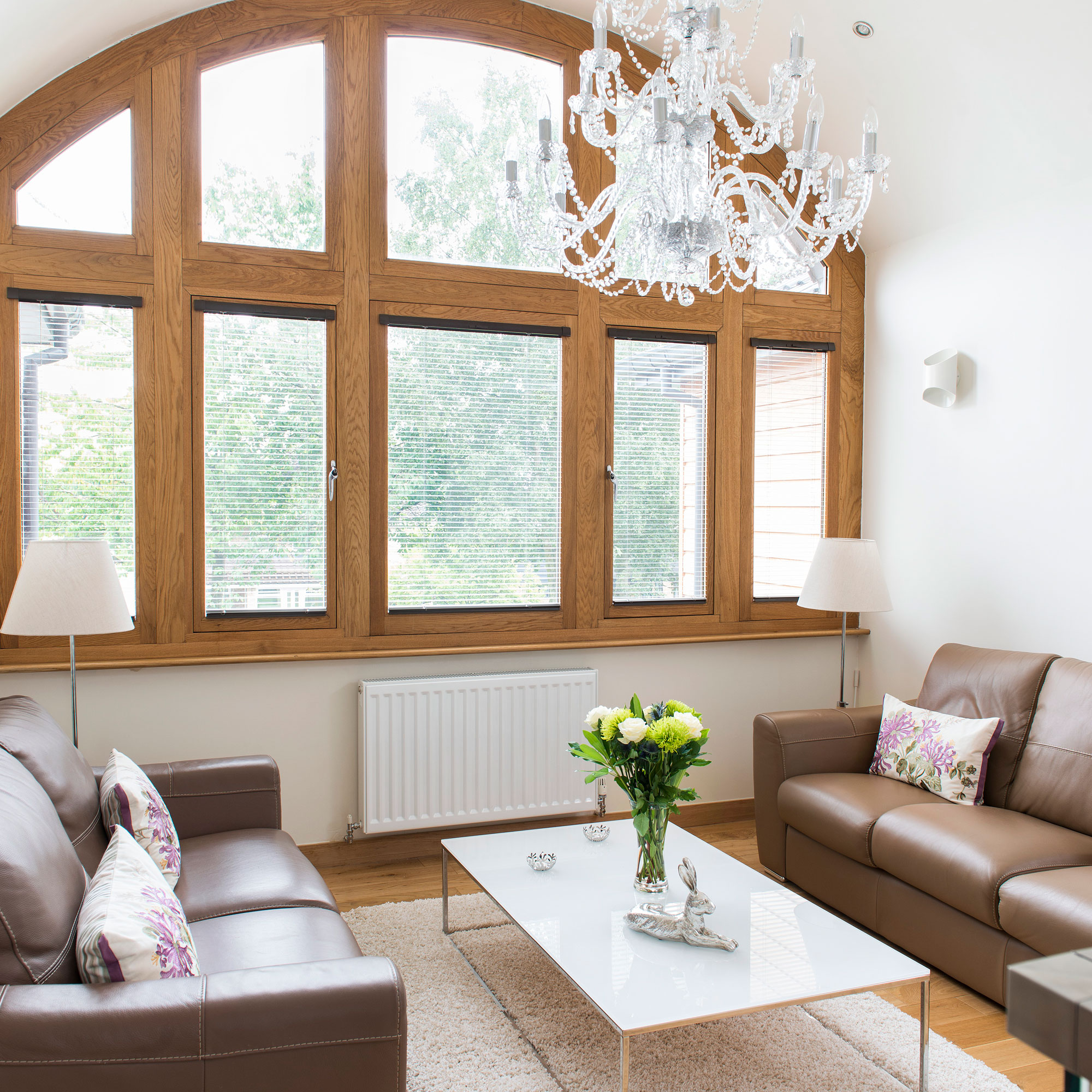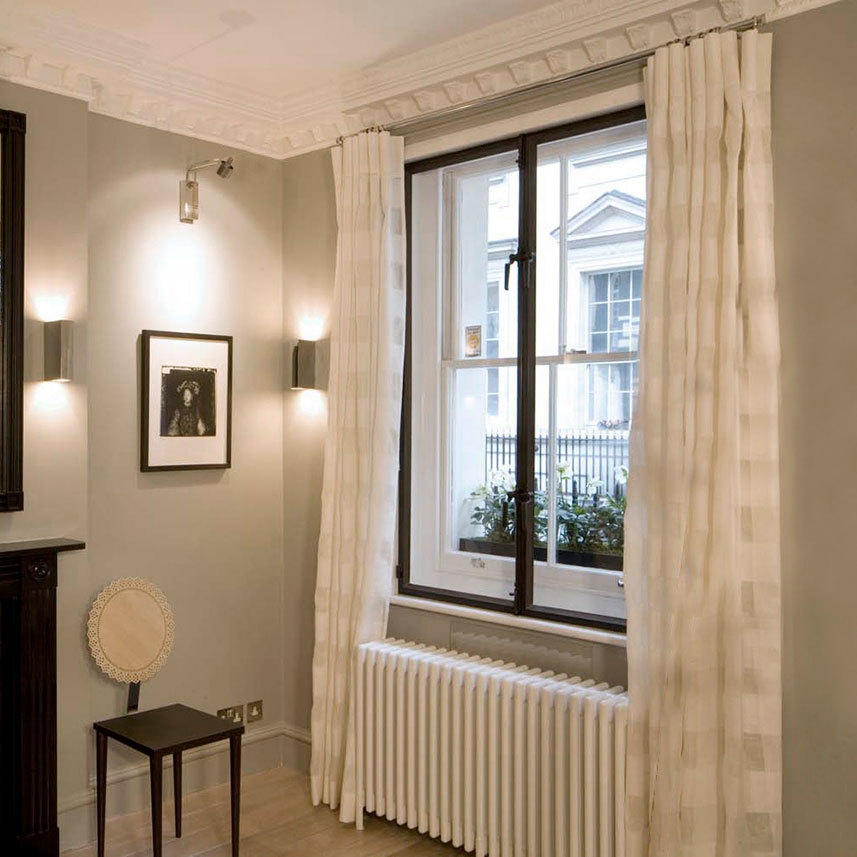How much is secondary glazing and is it worth it?
How much does secondary glazing cost? We look at the prices for the various options, plus installation and maintenance

If you’re in the process of making energy efficient upgrades to your windows, you may wondering 'how much is secondary glazing?'. You'll be pleased to hear secondary glazing offers a cost-effective alternative to double glazing.
So what is secondary glazing and is it worth it? Let’s start with the basics. Secondary glazing involves fitting an extra pane of glass or plastic to the inside of an existing window, creating a thermal barrier in the middle. The installation process removes the need to replace the entire window. When it comes to replacement windows, this is typically what makes double glazing cost more in the first place.
How much does secondary glazing cost?
As a rough guide, expect to budget a minimum of £5,000 to install secondary glazing throughout a three-bed home. Cheaper, DIY systems are available for less. But at the other end of the scale, high-quality metal frame setups could end up costing in the region of £10,000.
'There is such a wide variety of secondary glazing options available, so the cost really does depend on numerous things,' says Dave Mechem, director of inspection and assessment at RISA. 'From the material and style of secondary glazing to the size of the property, there are a range of variables that can impact the cost.'

On average, secondary glazing costs sit between £300 and £500 per pane. Of course, this varies depending in the number of windows you’re upgrading and the type of system you decide to install. Plus, some systems can be installed on a DIY basis, while others will require a specialist fitting team that you’ll need to factor into your budget.
When you’re shopping around, you’ll also need to decide on the level of functionality your secondary system should have. For instance, are you looking for a temporary solution to draught-proof existing windows during chilly winter months, which can be unclipped and lifted out in summer? Or are you looking for a permanent double-glazed layer that complements the aesthetic of a characterful period home?
'Material costs are fluctuating a lot a the moment, too,' says Dave Mechem. 'To get an accurate quote, you should consider getting in touch with a FENSA approved installer.'
Another key question to ask is: does secondary glazing work? In short, yes; though its effectiveness depends on the type of system you install. Greenmatch estimates that you could save as much as £45 on utility bills per month in a medium-sized home.
Types of secondary glazing and what they cost

Is secondary glazing worth it? We break down the types of glazing for your windows and the prices involved...
1. Removable magnetic secondary glazing
This system uses magnetic strips to fix the secondary pane onto the primary window. The magnetic seal prevents air from escaping. Magnetic removable screens could set you back less than £100 per m2, or between £1,500 and £2,000 for a whole medium-sized house.
2. Temporary (lift-out) secondary glazing
A single pane of glass or plastic that is installed on top of a fixed primary window in your home. On the plus side, being able to lift the frame out means you can clean it more easily, plus the primary window on the other side. Expect to pay between £3,500 and £4,000 for an entire medium-sized house.
3. Permanent secondary glazing
These solutions can be side hung (over a vertical pane or a sash window) or sliding (vertical or horizontal). Sliding solutions tend to be the most expensive, sitting at £5,000+ for an entire medium-sized house. Premium framing materials, such as wood or aluminium (or other types of metal), come with a higher starting price.
'For a professionally installed system, we’d recommend budgeting between £5,000 and £10,000 to install secondary glazing in a three-bed house,' says Andrew Smith, owner and director at City Sound Glazing. 'This figure is based on our aluminium frame system, including supply and installation.' Investing in higher quality materials, however, also means your system will offer a longer service life.
4. Draft-reducing windows vs soundproof windows
As with any type of window, the glass you choose for the pane will impact on the cost. Draft reducing secondary glazing could cost up to £900 per pane, whereas solutions that are also designed to reduce noise from the outside may cost £1,000+ per pane.
Secondary glazing installation costs
Many temporary secondary glazing products can be installed on a DIY basis, either by clipping or screwing in the panel. Meaning they come with no installation costs at all.
If you’re paying for a professional to come and fit secondary glazing, expect to pay a day rate between £120 and £160, according to Checkatrade. If you’re going with a supply and fit company, like City Sound Glazing, the cost of installation will be included in the price.
Maintenance costs

Secondary windows with wood frames will cost more to maintain. You’ll need to re-paint and/or re-varnish the surrounds every several years. If you can do the job yourself, you’ll only need to factor in the cost of the varnish and/or paint. If this isn’t a job you fancy tackling, expect to pay upwards of £400 for the all the windows in your house to be re-painted. This depends on where you live and how many windows you have. Aluminium and UPVC are low-maintenance and will just require cleaning, which you can do yourself.
If you’re investing in a high-quality set of windows and having them installed professionally, check the quality of the guarantee before buying. Any serious issues regarding the installation of your windows should be covered by that, so you won’t have to pay extra to get them fixed.
The verdict – is secondary glazing worth it?
'Secondary glazing is a cost-effective way to insulate and sound-proof windows,' says Lisa Morton, director at Architectural Bronze Casements. 'Plus, there is much less disruption and heat loss during installation. And there is no masonry, dust or making good after the windows have been fitted.'
Secondary windows are also an effective way to keep your home warm if you can’t install double glazed units because your home is listed or in a conservation area, for instance.
Installing double or triple-glazed windows does represent a bigger investment in the short-term. However, if you aren’t restricted by any planning guidelines, you stand to make bigger savings on your energy bills in the long-term.
Get the Ideal Home Newsletter
Sign up to our newsletter for style and decor inspiration, house makeovers, project advice and more.

Rebecca Foster started her journalism career in Bangkok in 2013, where she worked on the in-house editorial team at a luxury homes magazine. Since then, Rebecca has contributed to numerous property and interiors titles in the UK and Southeast Asia. She re-located to London in 2015 to work at one of the country’s leading self-build and home renovation magazines. In 2017, she left her job to split her time between freelance journalism and teaching yoga.
-
 Will a conservatory add value to your home and how can you maximise it?
Will a conservatory add value to your home and how can you maximise it?This is what the pros say
By Amy Reeves
-
 I’ve been looking for a new signature scent for my home and The White Company's new fragrance is the exact summer holiday smell I needed
I’ve been looking for a new signature scent for my home and The White Company's new fragrance is the exact summer holiday smell I neededSantorini smells fresh, summery and sophisticated
By Kezia Reynolds
-
 How to remove algae from garden walls in five steps – and the cleaning product experts rave about for tackling it fast
How to remove algae from garden walls in five steps – and the cleaning product experts rave about for tackling it fastExperts share their top tips for getting garden walls algae-free
By Katie Sims